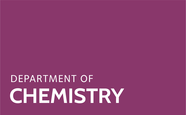Factor inhibiting hypoxia-inducible factor (FIH) is a JmjC domain 2-oxoglutarate (2OG) and Fe(II)-dependent oxygenase that catalyzes protein hydroxylations, including of specific asparagines in the C-terminal transcriptional activation domains of hypoxia-inducible factor alpha (HIF-α) isoforms. FIH is of medicinal interest due to its ability to alter metabolism and modulate the course of the HIF-mediated hypoxic response. We report the development of a light-induced, lysine (Lys106)-targeting irreversible covalent inhibitor of FIH. The approach is complementary to optogenetic methods for regulation of transcription. The covalently reacting inhibitor NBA-ZG-2291 was the result of structure-guided modification of the reported active site binding FIH inhibitor ZG-2291 with an appropriately positioned o-nitrobenzyl alcohol (o-NBA) group. The results demonstrate that NBA-ZG-2291 forms a stable covalent bond in a light-dependent process with Lys106 of FIH, inactivating its hydroxylation activity and resulting in sustained upregulation of FIH-dependent HIF target genes. The light-controlled inhibitors targeting a lysine residue enable light and spatiotemporal control of FIH activity in a manner useful for dissecting the context-dependent physiological roles of FIH.




